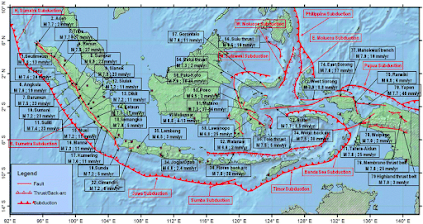Week 16 - Final Hazards Report
Due to Indonesia's geography and location, the country is at high risk for various natural hazards, some of which are connected to and exacerbate each other. However, I think the most urgent hazards to address are earthquakes and subsidence. Indonesia is one of the most seismically active countries in the world due to its location within the ring of fire and on top of multiple subduction plate boundaries. Mitigation of this hazard should be a priority due to the frequency of earthquakes and the devastating effects they can have. The country experiences thousands of e arthquakes of varying magnitudes each year, with about 320 events with a magnitude of 5 or more and about 3 events with a magnitude of 7 or more annually. Indonesia's seismic activity is heavily concentrated at and around plate boundaries, so these areas, such as the Sumatran coast, should be targeted and receive mitigation help first. In orde...
